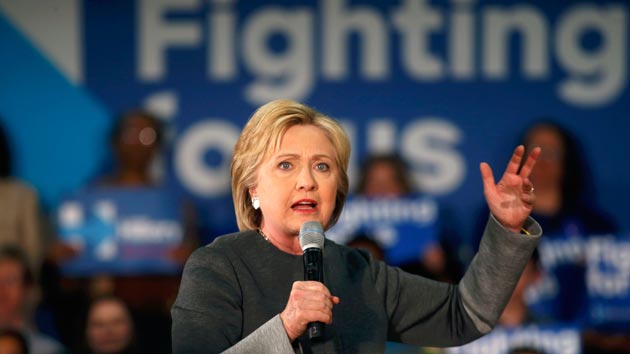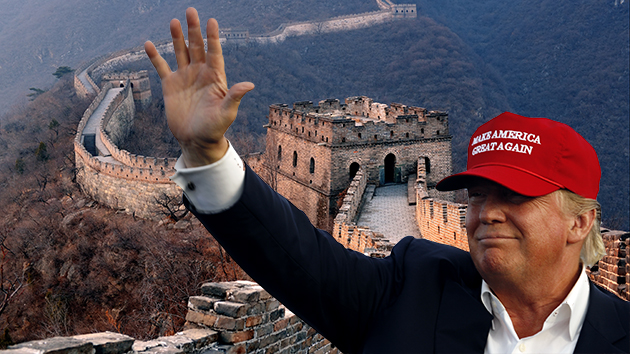
Joseph Sohm/Songquan Deng/Shutterstock
Someone should tell Donald Trump that the Great Wall of China was a staggeringly expensive and deadly failure.
I’ve climbed the Great Wall a few times. It is, I can confirm, totally big and beautiful—to borrow words from our future wall-builder in chief. Begun around 220 B.C. as a military defense system in northern China, the wall is now a UNESCO World Heritage site and has become the country’s preeminent national symbol.
During his Super Tuesday press conference in Florida, Trump repeated his promise to build a wall of his own along the US-Mexico border—something he famously wants Mexico to pay for. Trump described this task as “easy.”
“The Great Wall of China, built 2,000 years ago, is 13,000 miles, folks, and they didn’t have Caterpillar tractors!” Trump told the country. “They didn’t have cranes, they didn’t have excavation equipment.”
“We have all of the materials,” he said. “We can do that so beautifully.”
The myth of the wall
In Trump’s admiration for the Great Wall, you can hear the echoes of Richard Nixon, who surveyed the landmark during his 1972 breakthrough visit. The wall “exceeds all expectations,” Nixon enthused. “I think that you would have to conclude that this is a great wall and that it had to be built by a great people.” The wall has been a site of pilgrimage for Western leaders ever since.
But here’s the truth about China’s epic wall: It was a failure.
The Great Wall “didn’t do what it was supposed to do, it was enormously costly, and there’s no question that it caused great suffering among the people who built it,” says Arthur Waldron, an expert in Chinese military and diplomatic history at the University of Pennsylvania who has written a book called The Great Wall of China: From History to Myth.
It’s also not really a wall—at least not a continuous 13,000-mile wall. “It was nothing at all like we have in our imaginations,” Waldron told me. “I think that our friend Trump is dealing with the myth and not the reality.”
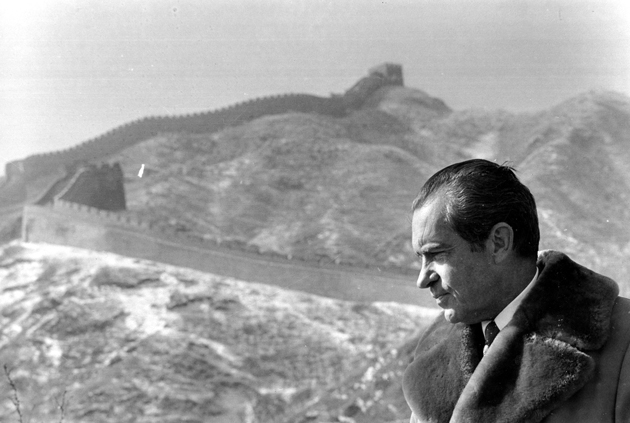
President Richard Nixon surveyed the wall in 1972: “This is a great wall.” (AP)
While there’s no doubt that the Great Wall was one of history’s most magnificent military installations, both its “greatness” and its “wallness” are exaggerated. It is really a series of fortifications and watchtowers (joined up around 220 B.C. and expanded upon over thousands of years under various leaders)—not an unbroken barrier. There are far-flung bits in the desert and bits that jut into the sea. Much of it has disappeared over the centuries, and other parts have fallen into disrepair. Its official length has been revised—and revised again—as additional ruins have been discovered.
The wall has some impressive (and beautifully restored) Ming-era fortifications from the 16th century, but they certainly don’t stretch all the way across China. The myth of the wall is a function, largely, of resurgent Chinese nationalism—and of the West’s romanticized notion of China as having an ancient, unbroken northern border. “The idea came into being, and it’s never going to disappear, that since time immemorial, China has been defined by this immense stone barrier marking its northern border, said to be visible from the moon,” Waldron said. “Which is, of course, not true.”
As the Washington Post‘s Ishaan Tharoor wrote in response to Trump’s comments, the Great Wall’s significance is best understood “not as a security barrier, but as a work of political propaganda.”
The longest cemetery on Earth
Then there’s the grim reality of what it actually took to build the wall. The northern fortifications that we know as the Great Wall were immensely expensive. During its Ming heyday, according to historian Walter A. McDougall, building costs must have run to “several million ounces of silver”—undoubtedly paid for, in part, by silver mined in Peru, transported across the Pacific, and brought to China via Southeast Asian trade routes. (Trump has said his wall will cost $8 billion; CNBC estimates it could really cost $15 billion to $25 billion, plus more for maintenance.)
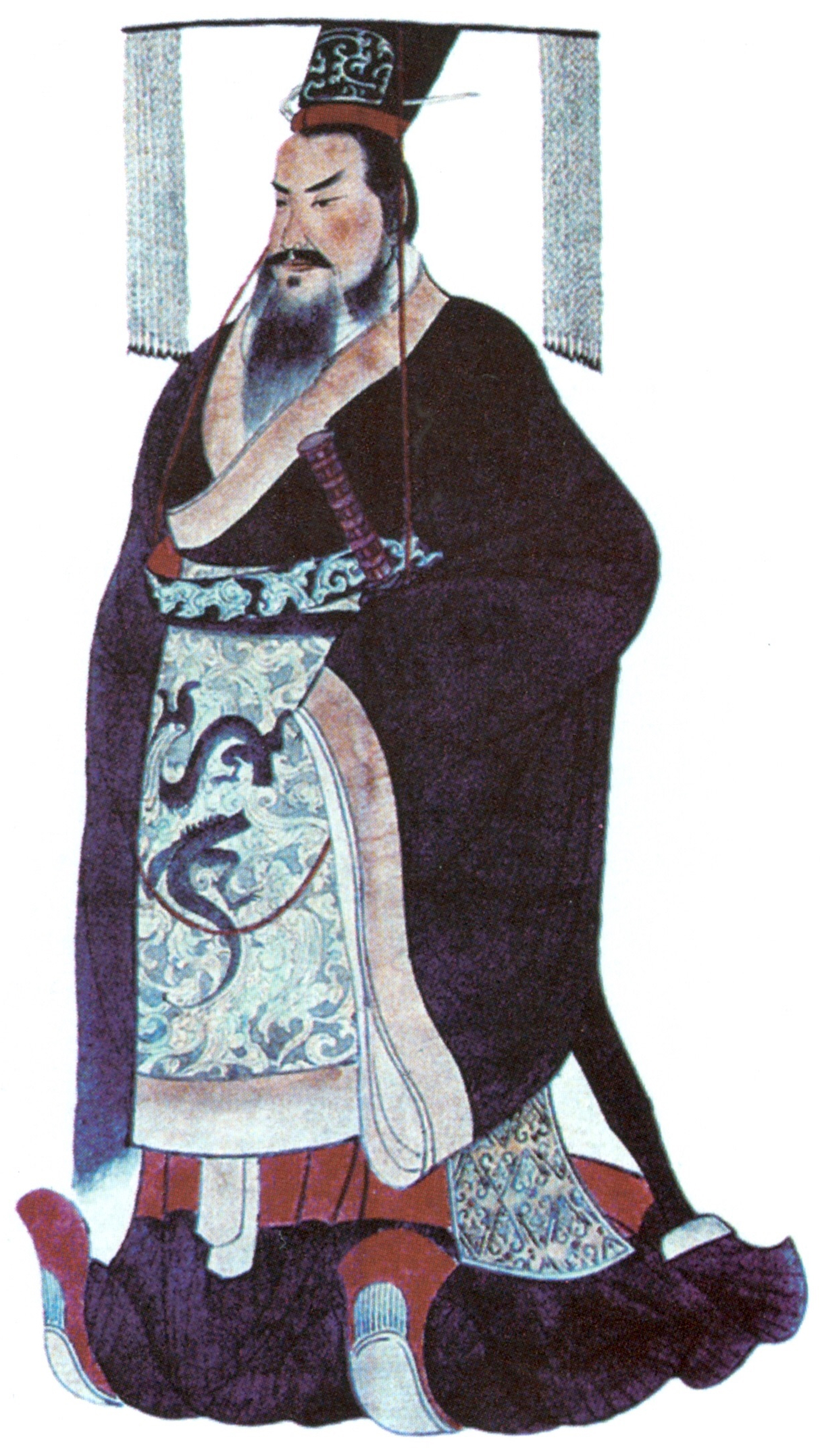
Emperor Qin Shi Huang spent massively on the wall during the third century B.C. This painting is from around A.D. 1850. (Unknown/Wikimedia Commons.)
There was also a tremendous human toll. A key part of the Great Wall narrative, historically speaking, was the immense suffering of the laborers who built it. “In Chinese history, the wall has always been viewed negatively until the last century when it suddenly turned into a positive symbol of Chinese greatness,” Waldron said. “Before that it was always a symbol of futility, waste, cruelty, bad policy.”
The work was grueling—muddy, cold, and remote. The exact death toll is hard to pin down, but one common estimate puts it at as many as 400,000 people—earning it the nickname “the longest cemetery on Earth.”
One of China’s most recognizable folkloric poems—often sung or chanted—is called “Meng Jiang Nu.” The story, which dates back to the early days of the wall, describes the suffering endured by a woman whose husband has been conscripted into forced labor. Distraught, she journeys to the wall to find him. But he is already dead, killed by the harsh working conditions. It’s an allegory about the cruel system of hard labor during the reign of Emperor Qin Shi Huang. At the climax of her sorrowful tale, her tears cause the wall to collapse and expose his bones.
A fiscal and foreign policy failure
While Trump sees the Great Wall as a model for securing America’s southern border, historians point to its failures.
In his book, Waldron details the debate in successive Chinese dynasties between those who “wanted exclusion and at various times advocated wall-building to accomplish it,” and those who “argued for trade and diplomacy, or in effect for peaceful coexistence with the nomads.” But the wall-building won out—and it helped shutter China off from the rest of the world. China’s leaders at the time did not want to trade with the horse-riding Mongols, whom they viewed as barbarians. “The Great Wall aimed to define a sharp boundary between civilized Han within, and alien Mongols without,” writes Peter C. Perdue in Warfare in Chinese History.
But it didn’t work. The Mongols didn’t recognize the wall as a border, and they “felt free to raid or trade across it,” writes Perdue.
“There was a cheaper solution, as it turns out, which was to simply do some trade with the Mongols,” Waldron argues. And that’s what the marauding Mongols wanted all along: to sell their horses.
The wall’s main flaw was not necessarily the fortification itself, but the humans who manned its vast expanses. They were far from home, lonely, and poor. Eventually, Waldron says, the military conscripts who had to work in the north for their entire lives intermarried with the Mongols, and trade simply happened on its own.
The wall had another weakness: its big, beautiful doors. “If you want to get through the wall, you just ride along and at some point you’ll find a gate, which you can get through,” Waldron said. “Or you’ll come to a place where it simply stops. There are large areas of the frontier where it’s open. There’s simply nothing there.”
The lesson, according to Waldron, is that “you can’t just say, ‘We’re going to keep people out.’ You have to deal with the constant osmosis of population.”
In any case, Waldron says, the Great Wall was bad fiscal and foreign policy, mainly paid for with pain.
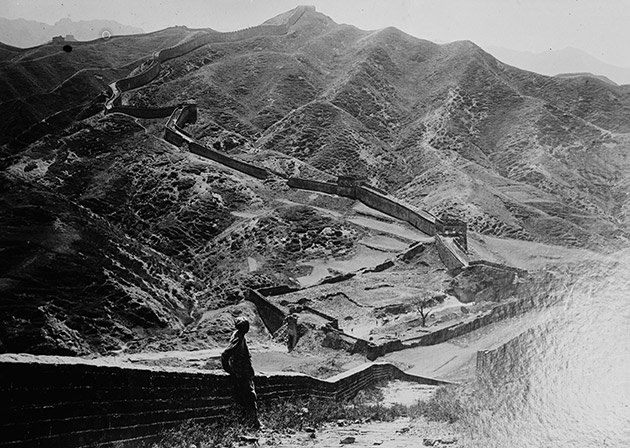
By the end of the Ming dynasty, things were looking pretty dire for China. Starving farmers abandoned their land and joined bands of outlaws. The Yangzte Valley suffered from catastrophic epidemics, floods, and famine. Lawmakers and bureaucrats were absorbed in bitter factional disputes. The emperor was a hermit, barricaded in the Forbidden City.
One of the wall’s greatest failures happened in 1644: The Manchus sacked Beijing after a Ming general, in an act of treason, opened the gates of the wall at Shanhai Pass. The Ming dynasty collapsed.
Our conception of the Great Wall is a “misunderstanding of the historical reality,” says Waldron. “Nevertheless, if you have as well-read and erudite a man as Donald Trump invoking it, it has a hold on the imagination that simply is never going to be broken.”


